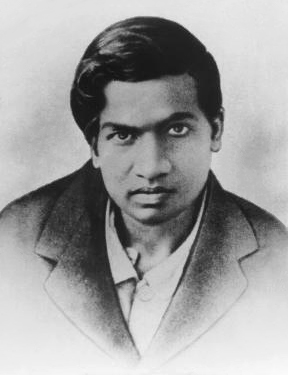Śrīnivāsa Rāmānujan: Difference between revisions
m (Abhishek moved page Srinivasa Ramanujan to Śrīnivāsa Rāmānujan without leaving a redirect) |
|||
| Line 78: | Line 78: | ||
[[Category:Indian Mathematicians]] | [[Category:Indian Mathematicians]] | ||
<references /> | <references /> | ||
[[Category:Organic Articles English]] | |||
[[Category:Vigyan Ready]] | |||
Revision as of 17:14, 28 November 2022
Śrīnivāsa Rāmānujan | |
|---|---|
 | |
| जन्म | 22 December 1887 Erode |
| मर गया | 26 April 1920 (aged 32) Kumbakonam |
| पुरस्कार | Fellow of the Royal Society |
Śrīnivāsa Rāmānujan born Śrīnivāsa Rāmānujan Aiyangar, (22 December 1887 – 26 April 1920)[1] was an Indian mathematician who lived during the British Rule in India. Though he had almost no formal training in pure mathematics, he made substantial contributions to mathematical analysis, number theory, infinite series, and continued fractions, including solutions to mathematical problems then considered unsolvable.
Contributions
Rāmānujan number :The number 1729. It is known as Rāmānujan number. It is the smallest number which can be expressed as the sum of two cubes in two different ways.
1729 = 13+ 123= 93+ 103
Infinite Series for π[2] : Śrīnivāsa Rāmānujan discovered infinite series for π in1910 . The series
Theory of Equations : He derived the formula to solve biquadratic equations.
Asymptotic Formula : He worked on partition of numbers. Using Partition function p(n) derived a number of formulae in order to calculate the partition of numbers
Ramanujan's magic square :
| 22 | 12 | 18 | 87 |
| 88 | 17 | 9 | 25 |
| 10 | 24 | 89 | 16 |
| 19 | 86 | 23 | 11 |
- Sum of numbers of any row is 139
- Sum of numbers of any column is 139
- Sum of numbers of any diagonal is 139
- Sum of corner numbers is 139
- Top row represents the date of birth Rāmānujan
Ramanujan’s Congruences :
He discovered the congruences